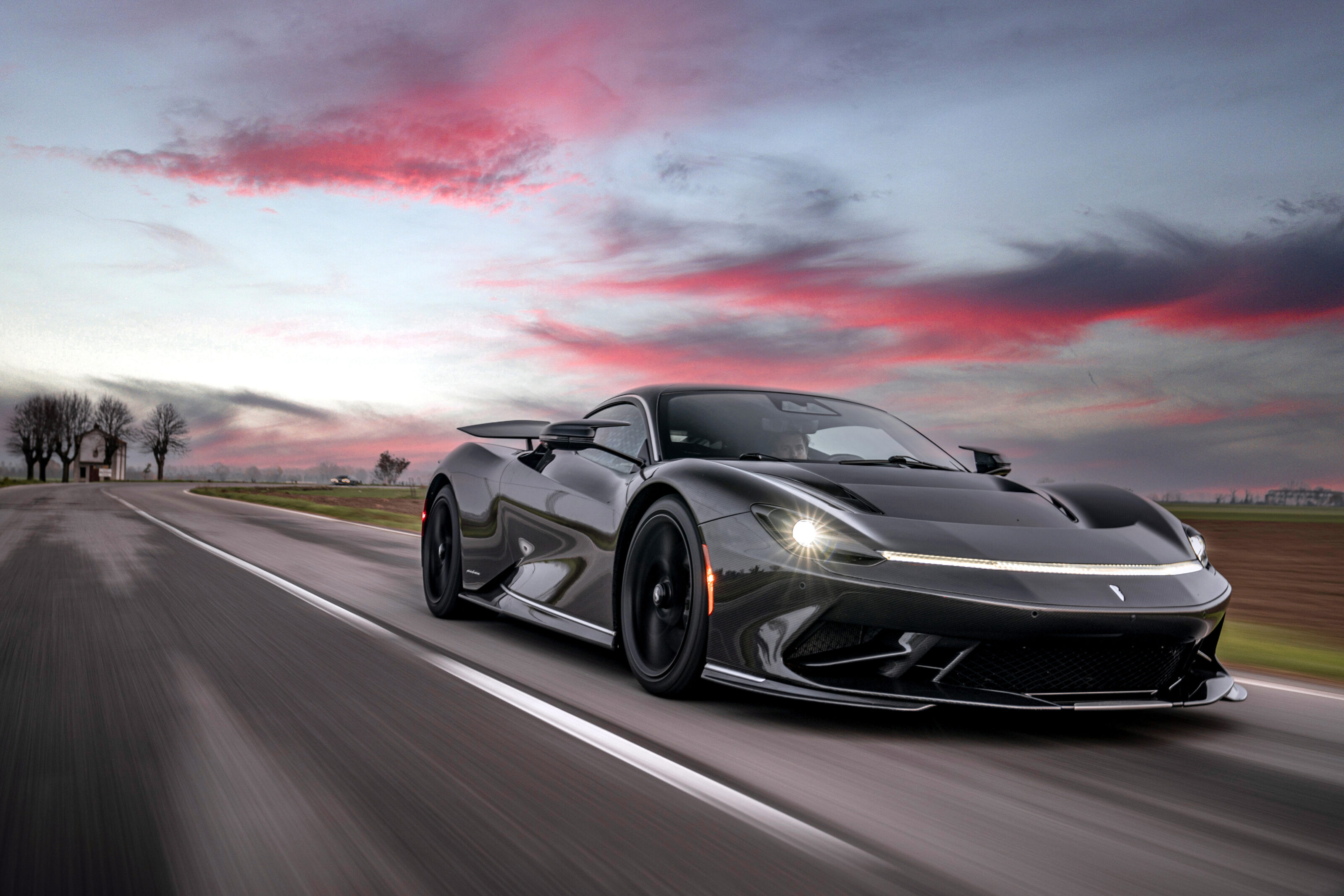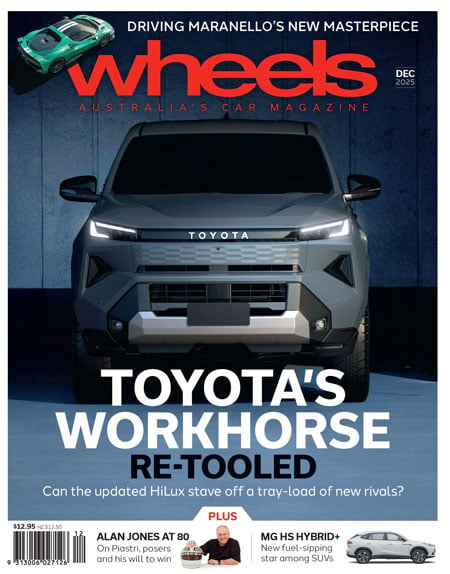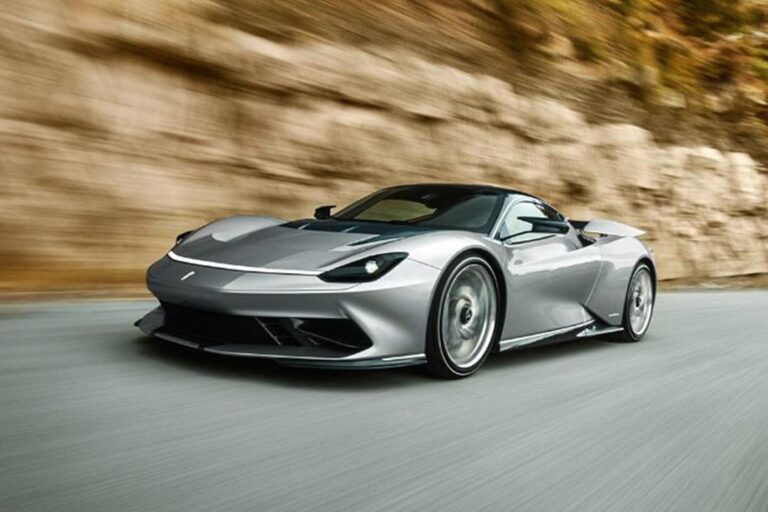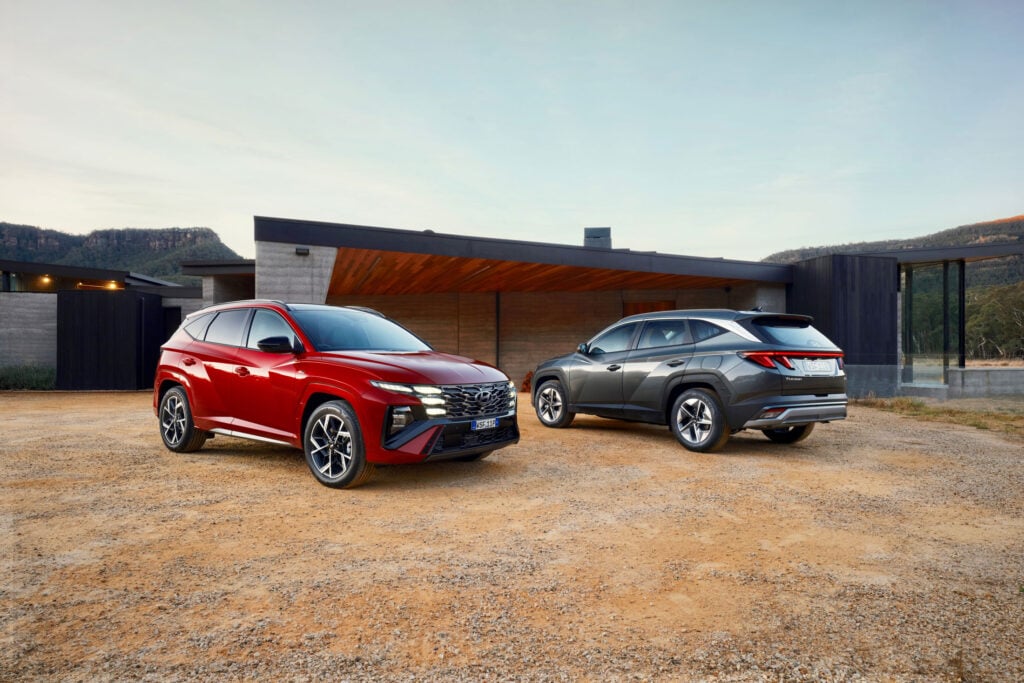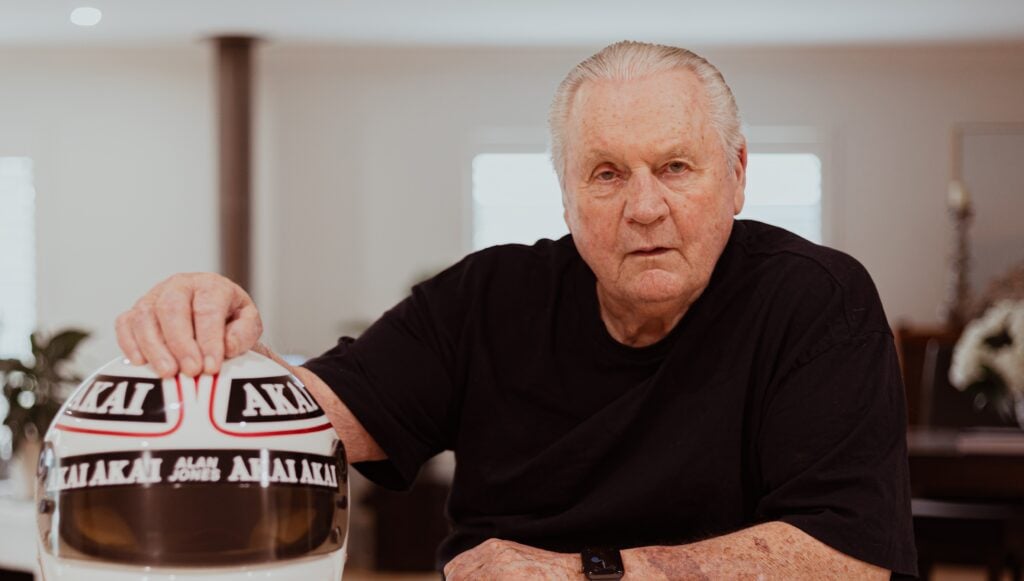If you love stats, the Pininfarina Battista has stats to make your brain fizz. The ‘pure-electric hyper GT’ produces 1400kW and 2300Nm, sprints from 0-100km/h in a claimed sub-2sec, then destroys 0-200km/h in sub-6sec – only its ample 349km/h top end is beaten by a Bugatti Chiron. (It also weighs around 2.2 tonnes and measures five metres nose-to-tail. Yeah, wow.) Then you actually experience those stats and your brain doesn’t so much fizz as explode. We’re driving back to Circuito Tazio Nuvolari for a track session, bit late, so I pin this pre-series example’s throttle on a northern Italian autoroute.
The Battista is on squishier winter tyres, engineering boss Paolo Dellacha’s in the passenger seat, and the performance just stretches out like we’re riding a surface-to-air missile. There’s little sensation of the nose rising or tyres chewing at the surface, struggling to cope with such cartoonish performance; we’re just gone, speed like falling – instant, linear, unceasing.
Lorries flicking past the passenger window provide the context, but the usual cues of extreme performance – the cycle of revs, the rhythm of gears, the blare of exhaust – are weirdly absent, the alienness of that vacuum amplified by the Battista feeling both isolated from the road surface yet securely squished into it. It’s like Paolo’s put wheels on an F1 simulator and I’m absolutely smashing it down the road.

Driving slowly is similarly alien – water sloshes in the cooling system like downed pints on an empty stomach, electric motors zeeewww, and there’s a deep, pulsating artificial soundtrack that I find a bit oppressive in all but the gentlest driving modes – this is high-performance driving, Jim, but not as we know it.
Pininfarina, then. You’re possibly familiar with the Italian coachbuilder’s work, because for the last nine decades it’s designed some of the world’s most beautiful automobiles (and the Mitsubishi Colt CZC) for other people, but the Battista is its first eponymous effort and sets the stall out for new off-shoot Automobili Pininfarina – established after Indian company Mahindra & Mahindra took a controlling stake in Pininfarina SpA in 2014, with the continuity of Battista’s grandson Paolo Pininfarina remaining chairman.
A maximum of 150 Battistas will be hand-assembled at Pininfarina SpA in Cambiano, costing 1.98m euros before local taxes, and before designer Luca Borgogno helps you personalise the thing, but there are more affordable, more numerous EVs incoming – probably an SUV, presumably an entry-level supercar, maybe something else.
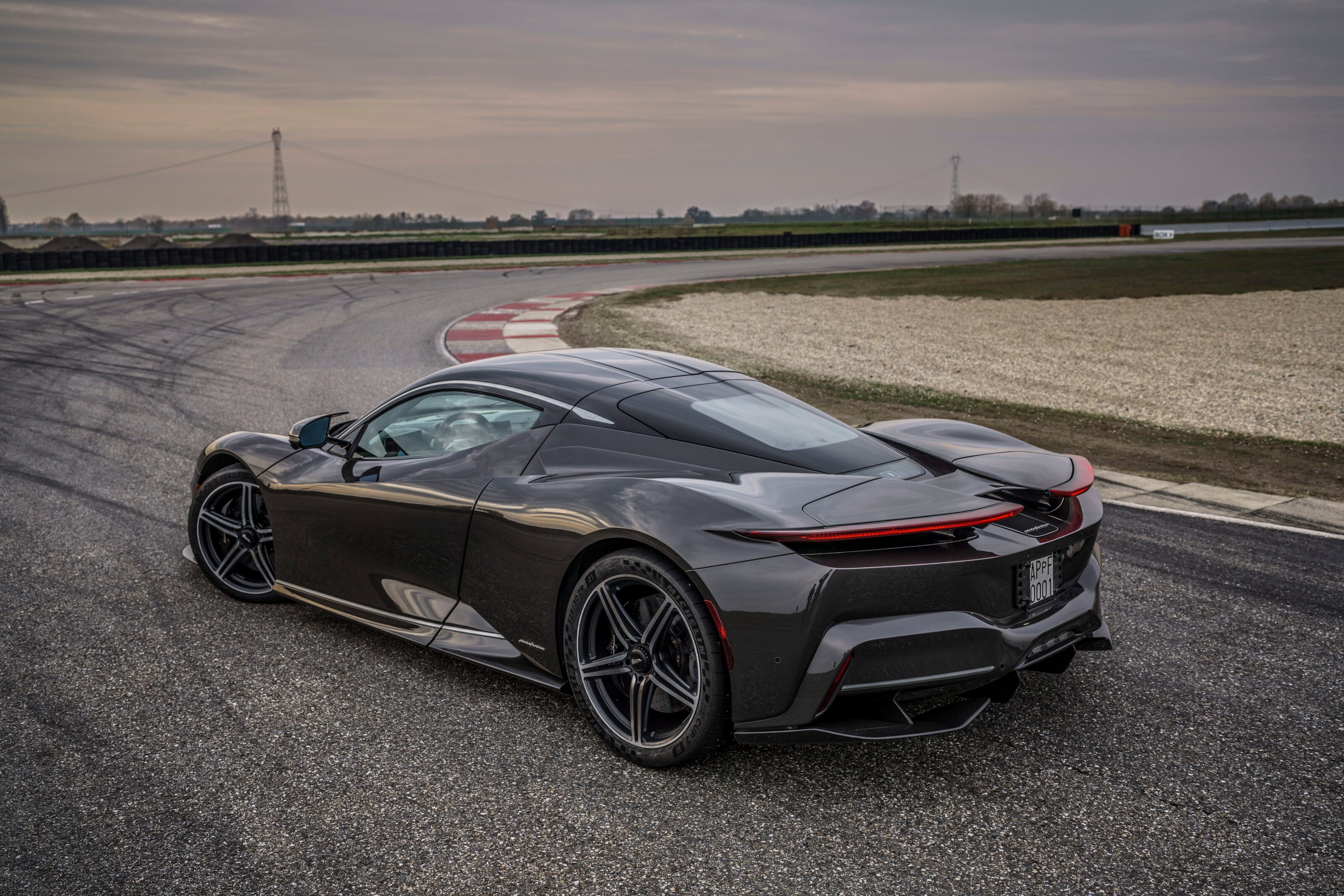
For all that’s radical here, the Battista sticks to Pininfarina principles of clothing someone else’s mechanicals, and under the carbon-fibre body reside the bones of the Nevera from Croatian EV maker/part-Bugatti owner Rimac. Four e-motors drive a wheel each, with up to 500kW for the front axle and 900kW for the rear, all controlled by torque vectoring, while each axleis controlled by its own single-speed gearbox.
Arguably more important is the influence of the lithium/manganese/nickel liquid-cooled battery, not only because it stores a juicy 120kWh and allows the Battista to run for up to a claimed 500km, but because it’s arranged in a T-shape, the top of the T behind the two seats, its stem running down the spine like a propshaft. That’s why the seats are positioned low down like a race car either side, which would be impossible with a skateboard EV platform, and why the Battista is so low and pointy (and why it’s got terrible luggage space like a Ford GT, not a Tesla Model S)
The battery’s wrapped in a carbon fibre passenger cell identical to a Nevera’s to around half way up the doors, but then bespoke to give Pininfarina’s designers some freedom over the hard points – the Battista is notably more cab-forward than a Nevera. Designer Luca explains it’s a mid-engined look despite EV hardware because “this is the visual code of the hypercar… and the other hard points are similar to a normal car, because we still have five radiators [one front centre for the battery, one per e-motor], there are motors and inverters behind the battery, and in front of the driver’s feet. When you put it all together, there are not many ways round it.”
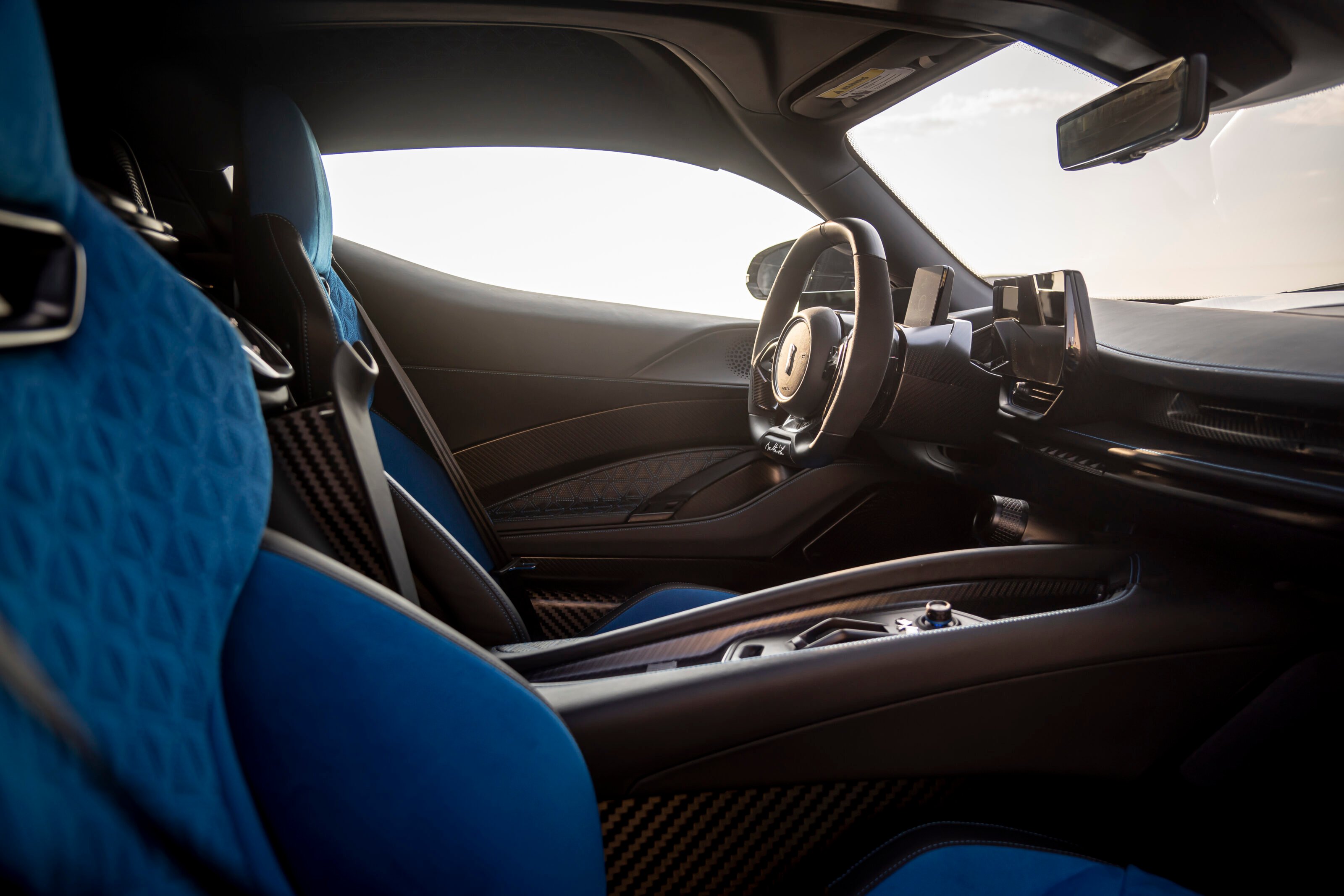
Crucially this is more than simply a pretty body on a Nevera – an internal team of 40 engineers (circa 10 on the chassis) have tuned all the powertrain software and suspension to Pininfarina-spec. The public face of all this graft (if keen to credit others) is ex-F1 driver Nick Heidfeld, who drove for Mahindra Racing in Formula E, and now regularly checks in on development as test and development driver. He’s also on hand to help today.
This is Heidfeld’s first road-car project, he seems genuinely embedded with the team rather than celebrity stardust for the press pack, and says he’s enjoying the challenge of a road car’s broader targets and longer timeframes after half a lifetime at the race track – he’s been involved from day one, working in the sim, even helping set the seating position and HVAC. “We’ve still got some software tweaks for the torque vectoring, but we are there for the hardware,” he tells us. “The performance of the Battista on track is astounding and the turn-in is better than any car I’ve owned [his current garage includes a Carrera GT], but it’s not nervous on the road.”
After a quick familiarisation track lap passengering with Nick, it’s my turn, warming up with a loop on nearby roads. The dihedral door takes away a chunk of roof as it lifts, making jumping in the driver’s seat easier, and the low-set driving position is almost perfect – though I’d recline the seatback a fraction more if it wasn’t stopped by the carbon tub.
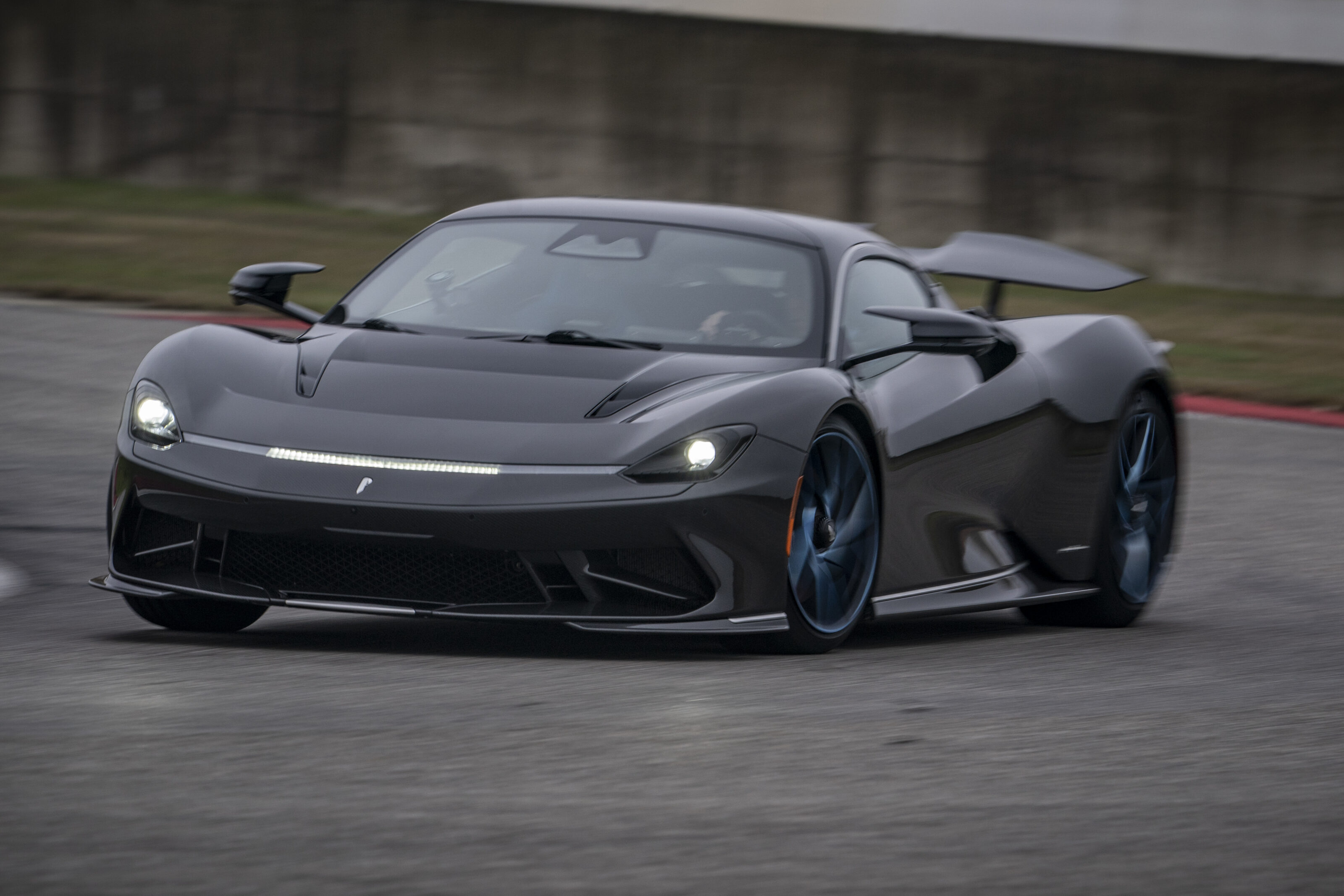
The cabin is plush, quality seems good if far from the Bugatti/Pagani realm of interior jewellery, and you’re faced with a highly driver-centric layout with two large infotainment screens either side of the steering wheel that taper in like a vanishing point – the one on the left for various vehicle functions like seat and steering wheel adjustment, the one on the right for multimedia, plus a portrait screen in the centre for speed. It all works well enough, but the steering wheel does hide a significant portion of the displays.
A rotary dial like an afterburner is positioned at elbow height on the driver’s door, and lets you twist through five driving modes that gradually uncork full performance while firming up the steering and suspension: Calma knocks everything back for tricky conditions (300kW), Pura (745kW) is your day-to-day and the mode I ease in with, then there’s Energica (1000kW) when you want a decent scare, and finally Furiosa (1400kW) that goes full are-you-absolutely-sure-about-this-bat-shit mental. Production cars will let you mix-and-match the different settings in Caraterre mode.
The Battista is not a challenging car to drive at moderate speed – its primary ride is extremely compliant in the soft setting, carbon-ceramic brakes squeeze with authority rather than grab impatiently, and the light steering shrugs off excess kilos and feels nicely accurate, if without so much feel and with some sneeze-factor around the dead-ahead (probably for the best given how rapidly things can occur).
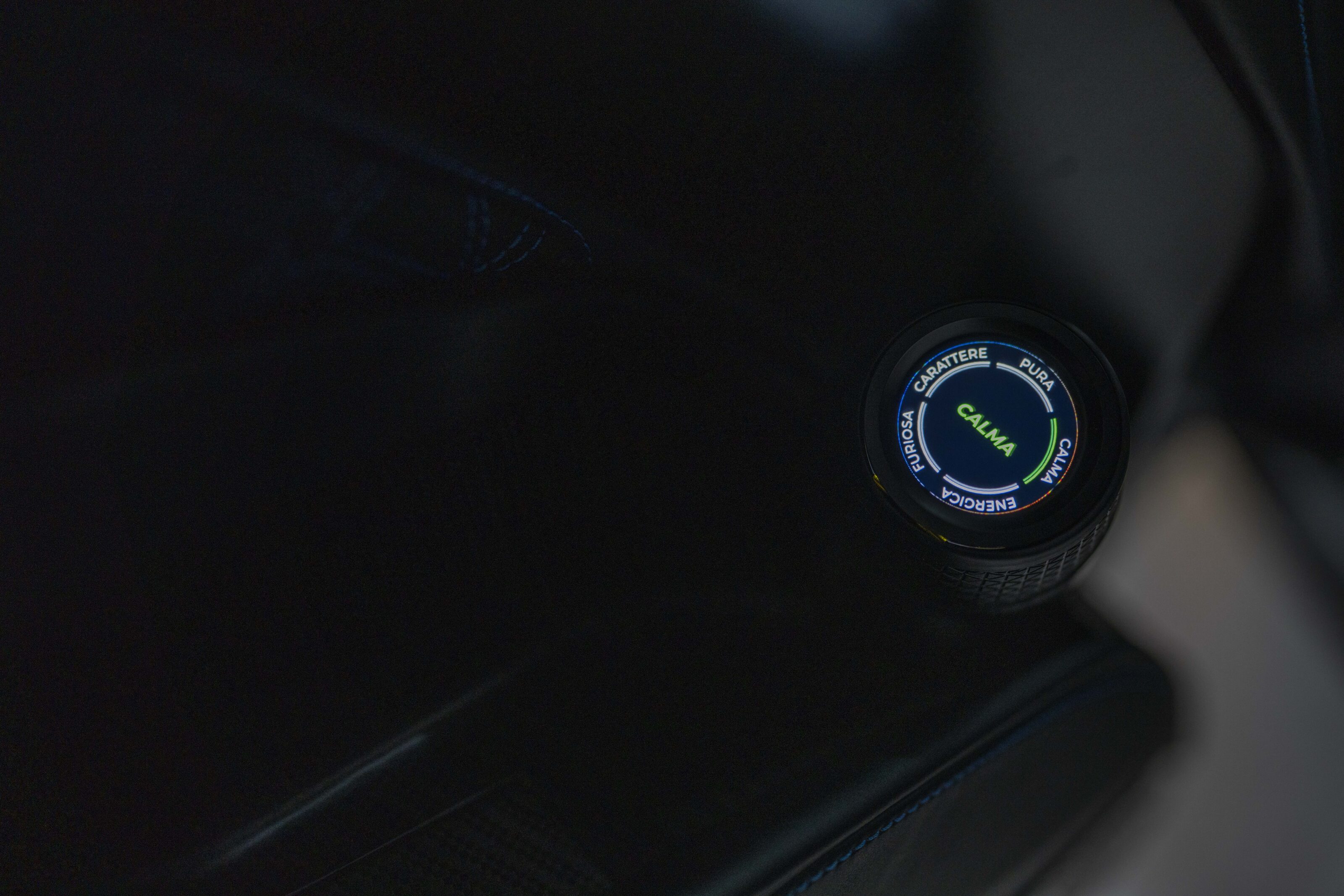
Acclimatising to one-pedal driving takes time because the re-gen is so pronounced when you back off – you end up hinging from your heel very precisely, which might get tiresome on longer cross-country trips – and it does feel unusually wide on the road, especially when there’s armco on one side and battered 40-year-old Pandas on the other.
We blat up a rural Italian road with asphalt that rolls like a paved Atlantic swell, its edges badly frost-fractured. The Battista’s extravagant mirrors block vision through corners and do nothing to shrink its perceived width, and some surprisingly raw thunks travel through the carbon chassis on rougher sections, but when the road flows the Battista is just mighty – there’s pliancy to simply glide over the rough stuff, plus excellent body control, and the monumental performance just stretches out like elastic, always ready to give you an outrageous amount more, even in the relative comfort zone of Pura mode.
More impressive is how sorted the Battista is through corners. Roll it in at an indecently high lick and it just grips hard, stays flat as a spirit level and feels eager for you to get back on the power. The design tricks you into expecting a mid-engined feel, but the Battista is more neutral and feels less susceptible to weight transfer than that – the stats say its 48/52 per cent front-to-rear, and its very substantial mass is tucked way down low.
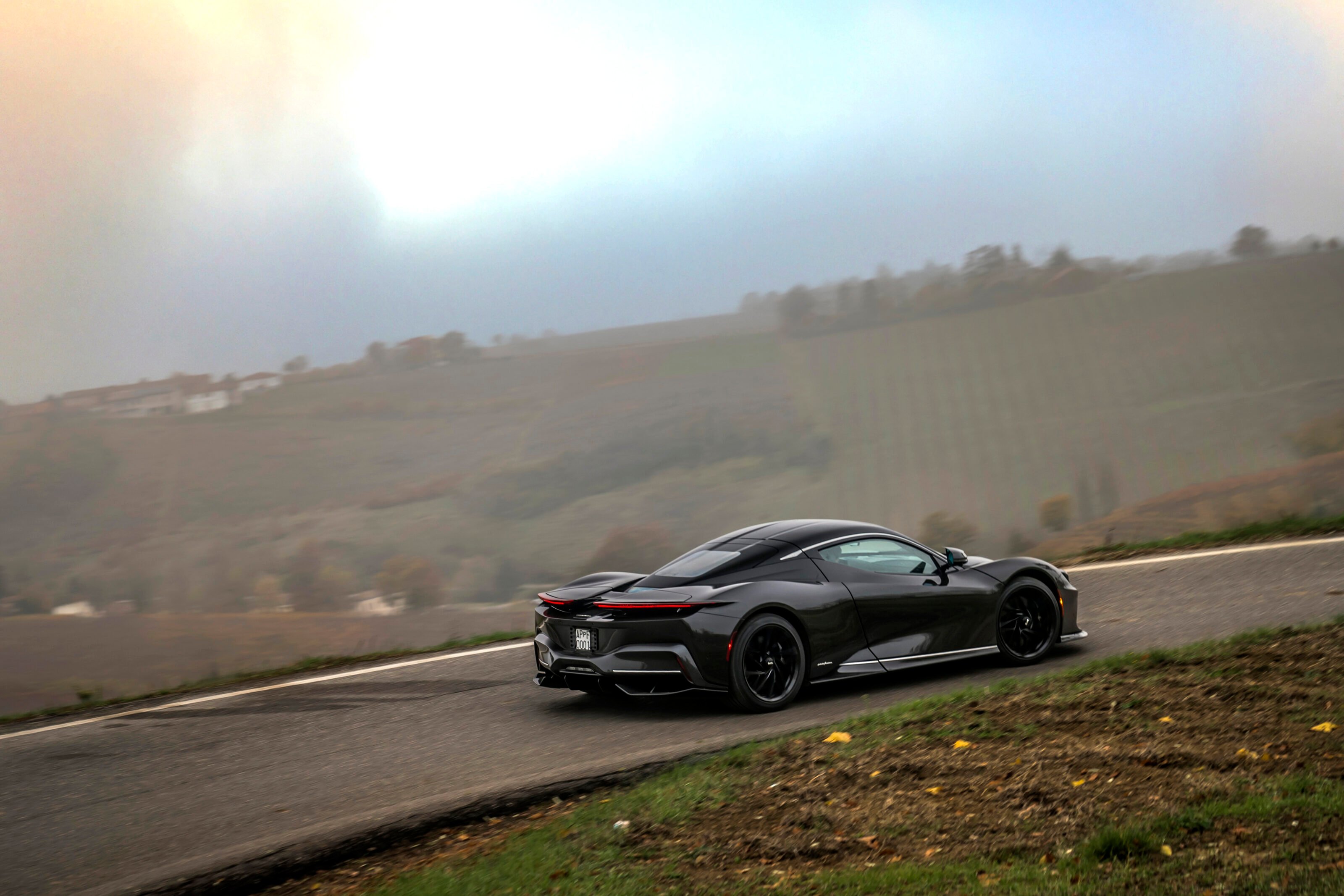
By the time we’re back at the circuit we’ve covered around 90km, admittedly some of it like we’re racing a Lotus Evija and Rimac Nevera for the last charger in town, but charge has dropped from 87 to 44 per cent. The Battista’s whisked off to a pit garage, plugged into Pininfarina’s charger (the charger slot is just above the rear numberplate, and it’s good for up to 180kW fast-charging) and soon we’re rolling silently from the pits.
The circuit’s a little damp, so I start with the Michelin Pilot Sport 4S tyres in second-from-top Energica mode. Acceleration down the long start-finish straight is just as surreal and composed as it felt on the autoroute, and again the turn-in is spookily flat, but the re-gen and braking seems totally different – I don’t even notice the re-gen because I just urgently need to haul 2.2 tonnes down from warp speed, so I work the carbon-ceramic stoppers like there’s no re-gen at all. ABS stutters hard under my foot, and spotting your braking point is hard when things are moving so quickly.
Nuvolari’s infield sequence provides the space and more measured pace to experiment balancing throttle and grip, and reveals arguably the biggest difference to a normal supercar – torque vectoring and stability control work overtime to get the power down, so the normal dialogue between chassis and throttle is clunkier – I hit a better rhythm carrying more speed into and through the corner, and being more patient on the throttle, but there’s still palpable tension as grip and power fight it out.
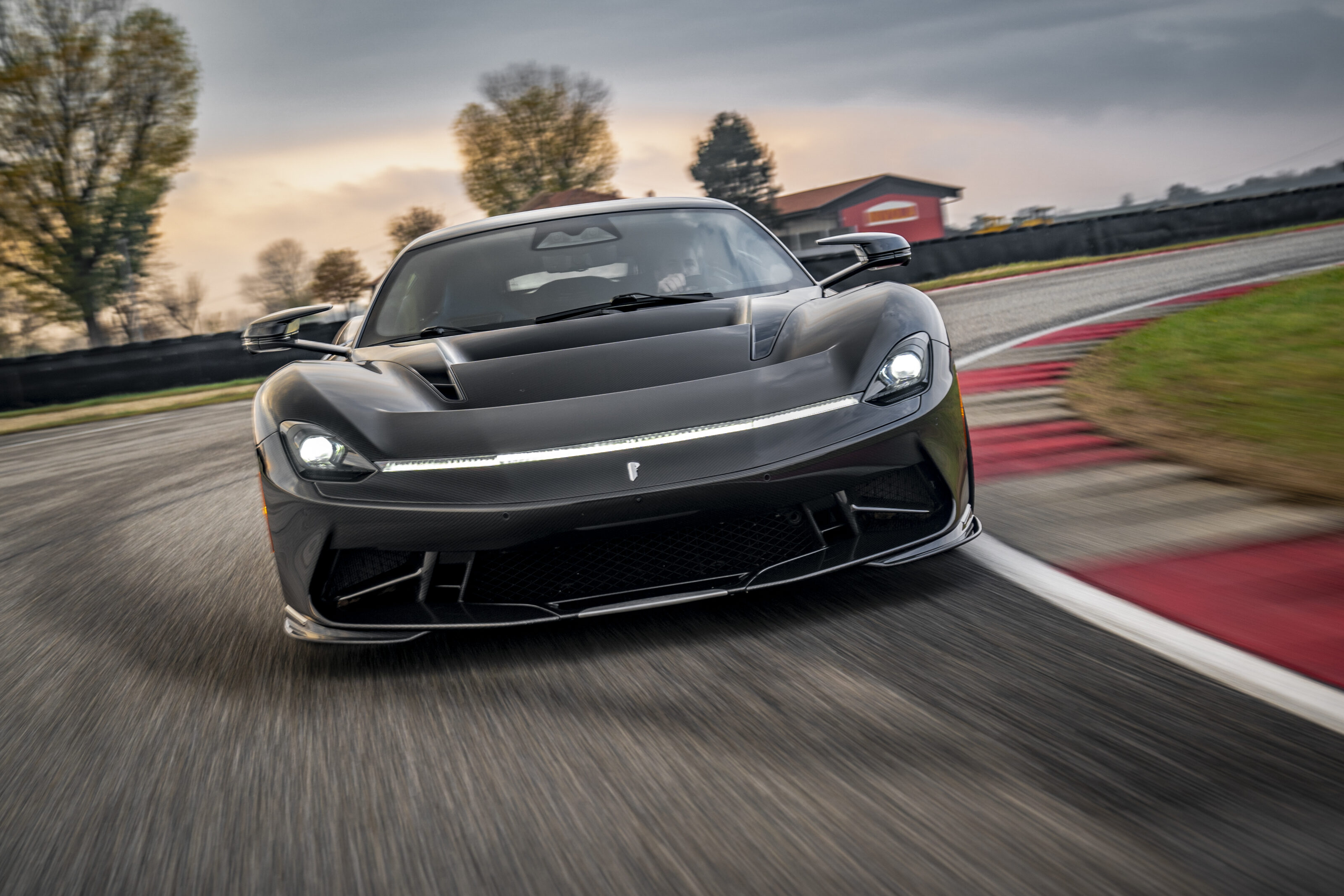
I even trigger limp mode several times because the software just has enough, and when I switch everything off and try to drift the Battista, I spin it like it’s an M3 with 1000kW on a light switch. Even when I learn to make much finer inputs, progress is still lumpy. Apparently this stuff is still being finessed ahead of production.
When the track dries, the Battista clicks far more convincingly on super-sticky Cup 2 R tyres, in full-bore Furiosa mode and with everything disabled – you sense greater rear bias (in fact there’s the same split, but extra power amplifies the sensation), these gummier boots let go more progressively and the torque vectoring is less frantic.
Through direction changes the Battista’s body moves around more fluidly, there’s actually very little steering corruption despite the front tyres dealing with such brutal power, and this is speed to scramble your brain, to churn your guts.
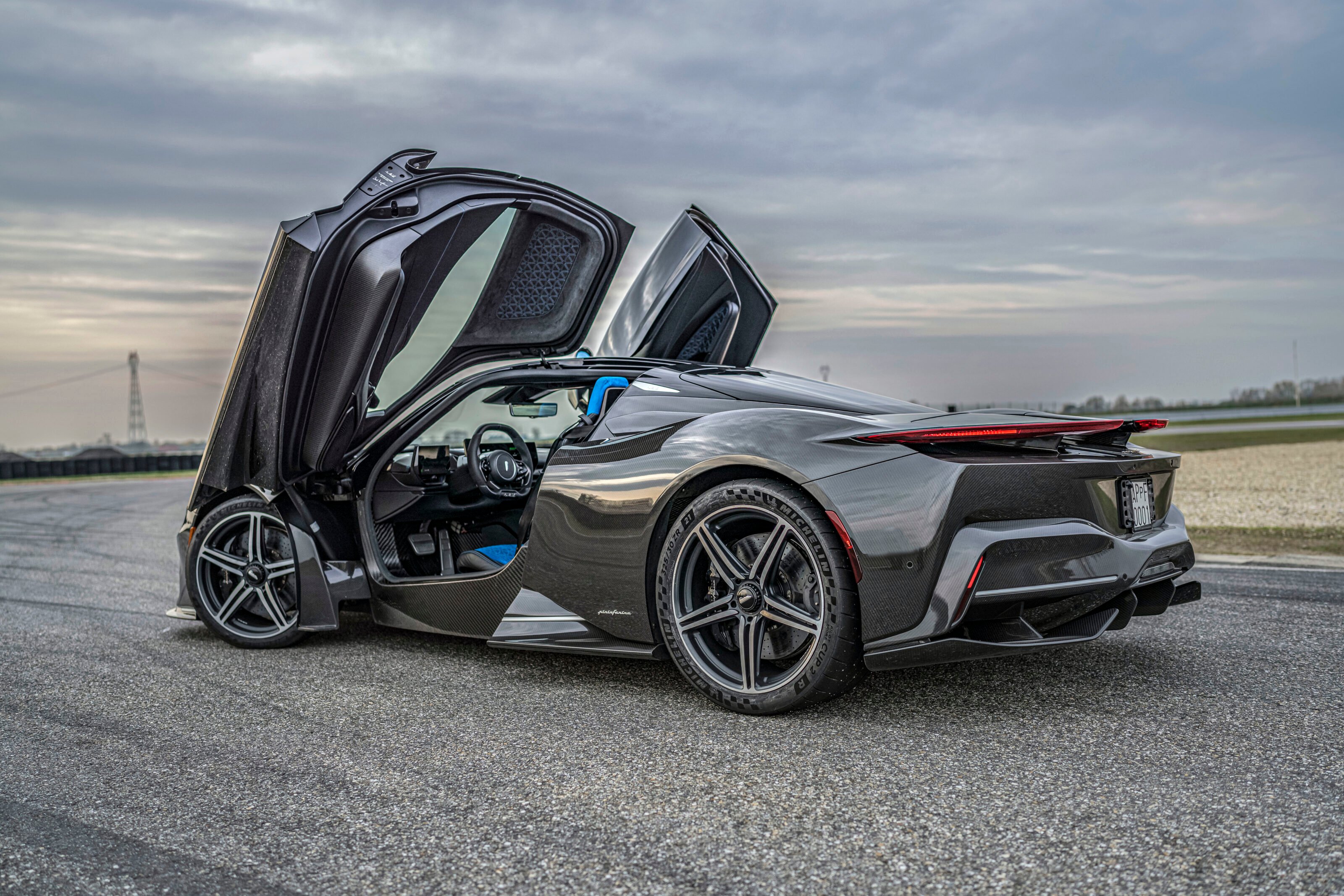
It is also a lot to manage if you get the rear loose under braking and need to trim it on the throttle. And I really do get it loose, properly on-the-lockstops loose – it happens when I squeeze the throttle hard out of a left-right flick then brake hard for a tight right-hander, not knowing the ABS software has just thrown in the towel.
To be honest I don’t really feel the tyres lock up, I’m just out of control in a snap and tossing on full opposite lock because the wall that was to my left is now filling the windscreen like the handbrake’s been yanked. I hit the grass, try to add and subtract lock as appropriate, but really I’m just waiting for an impact that never quite comes. Phew.
There are still rough edges to smooth out on this pre-series example before production begins, then, and I’m relieved not to have destroyed one before they got chance, but as the opening salvo from Automobili Pininfarina, the Battista’s already made quite the impact.
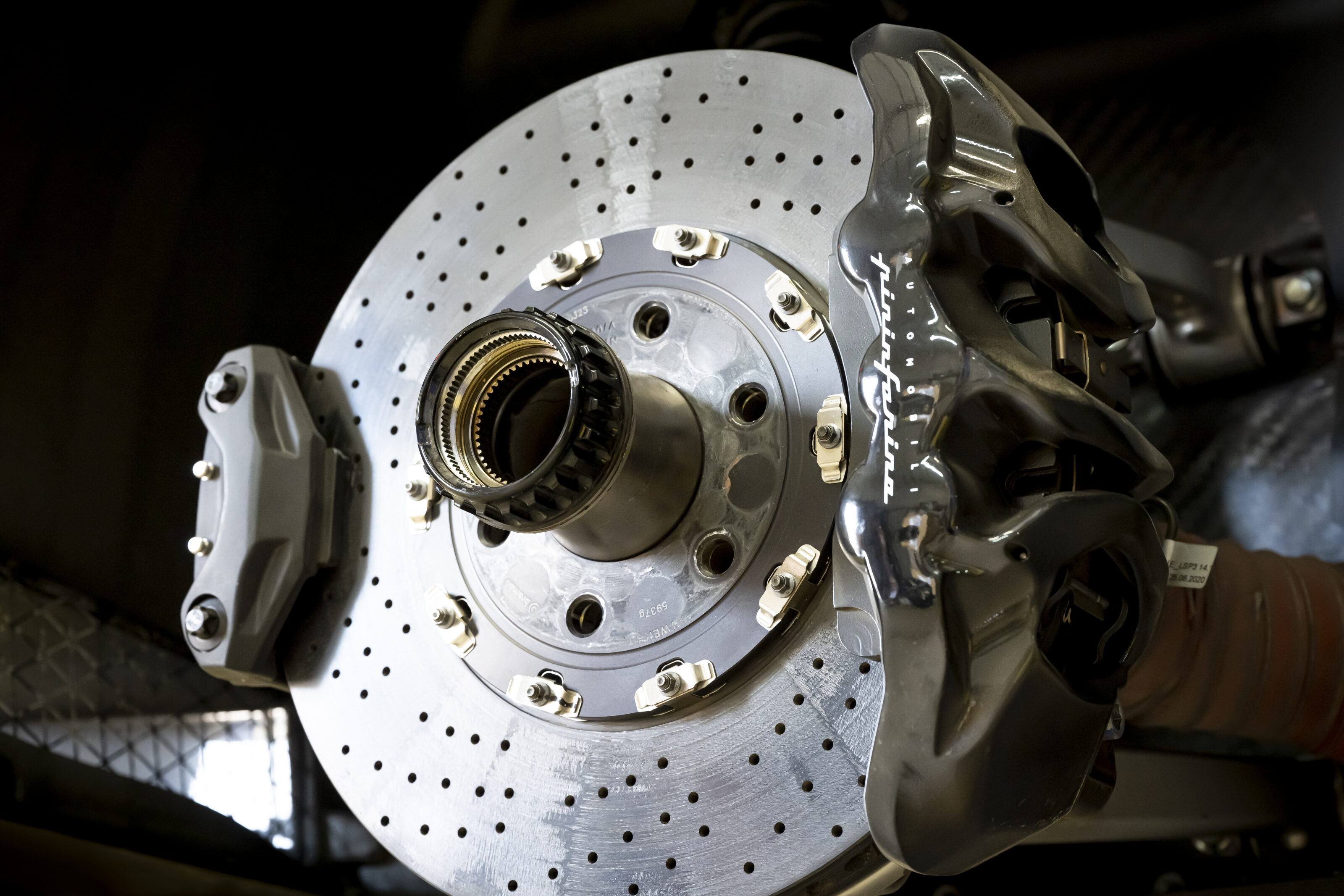
THE BIG BOSS
Swede Per Svantesson is Automobili Pininfarina’s CEO, initially joining the company as COO in early 2018, then taking over the top job from former VW and Audi man Michael Perschke in April 2020. Svantesson was born into the car industry. His dad worked for Volvo from 1942, and Per himself started on the Gothenburg assembly line during summer holidays at the age of 16.
His career proper began at Volvo in 1983, later he worked for automotive supplier Valeo in the US in the 1990s, and he had a stint as a senior VP at Volvo buses. Prior to moving to Automobili Pininfarina, he held VP and SVP roles at (Swedish EV maker/Saab owner) NEVS, where he helped oversee the company’s deal to take a stake in Koenigsegg.
BUYING YOUR BATTISTA
Once you’ve put your 1.98m euros down to secure a Battista you’ll sit down with chief designer Luca Borgogno (whose time with Pininfarina dates to 2005, via a short stint with Lamborghini) to choose personalisation options before your vehicle is hand-assembled at Pininfarina SpA in Cambiano, Italy. No two Battistas can be the same – not only because there are apparently 12.9 quintillion different permutations which makes that a bit unlikely, but because each combination will be removed after each client has made their selection. The final build slots for 2022 are now being filled.
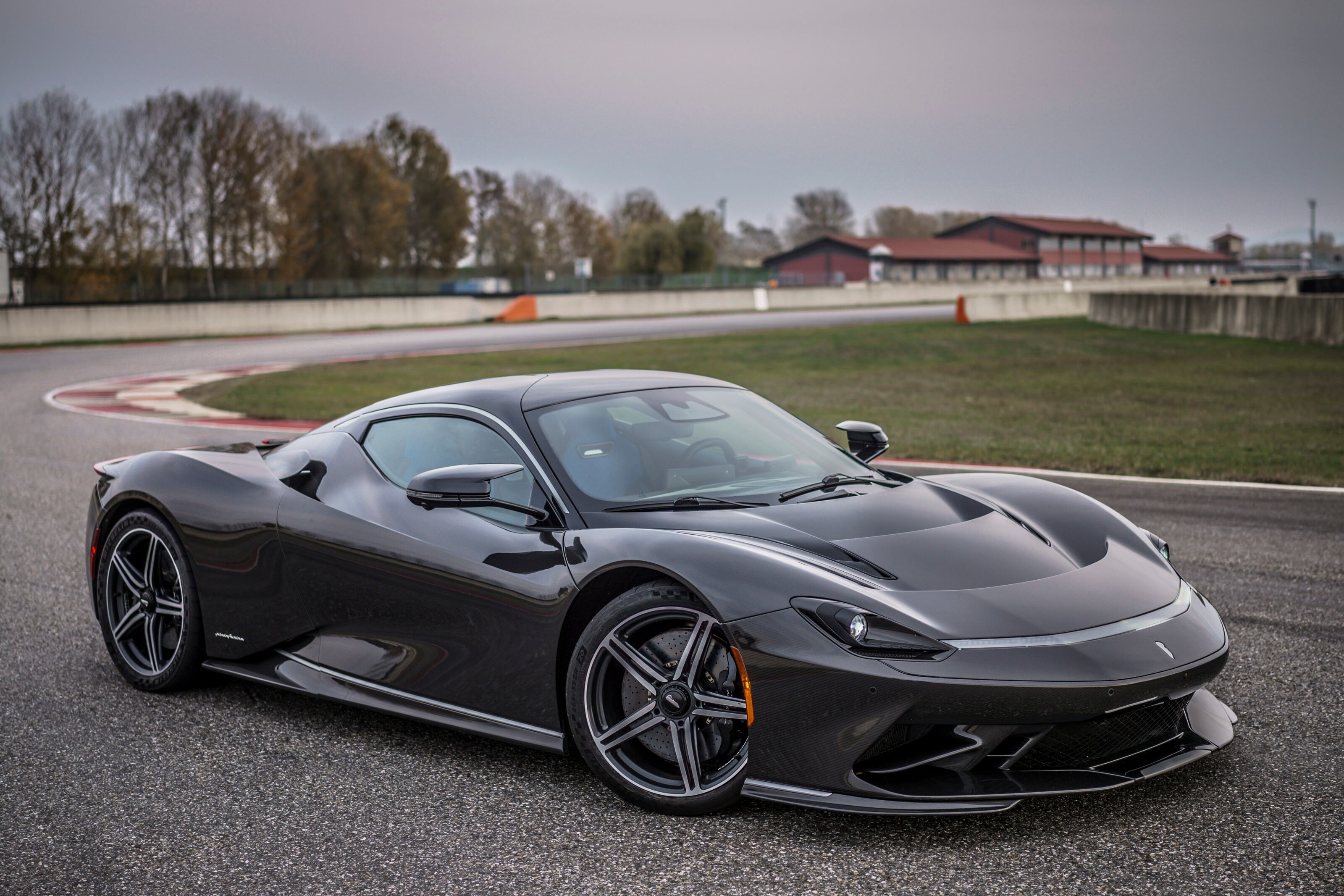
PININFARINA BATTISTA SPECS
| Body | 2-door, 2-seat coupe |
| Drive | all-wheel |
| Motors | four liquid cooled permanent magnet synchronous motors |
| Battery | 120kWh lithium nickel manganese cobalt oxide |
| Power | 1400kW |
| Torque | 2300Nm |
| Power/weight | 636kW/tonne |
| Transmission | single-speed gearbox on each axle |
| Weight | 2200kg |
| Suspension | double wishbones, coil springs, anti-roll bar (f); double wishbones, coil springs, anti-roll bar (r) |
| L/W/H | 4912/2036/1214mm |
| Wheelbase | 2745mm |
| Tracks | 1716/1720mm (f/r) |
| Steering | electrically assisted rack-and-pinion |
| Brakes | 390mm ventilated carbon-ceramic discs, 6-piston calipers (f/r) |
| Wheels | 20 x 9.5-inch (f)u00a0 21 x 12-inch (r) |
| Tyres | 265/35 ZR20 (f) 325/30 ZR21 (r) Michelin Pilot Sport Cup 2 R |
| Price | 1.98m (euro) |
| Pros | Mind-boggling tech and thrust; styling cohesion; fit and finish |
| Cons | Still needs some systems fettling; only 150 will be built |
| Star rating | 4/5 |

